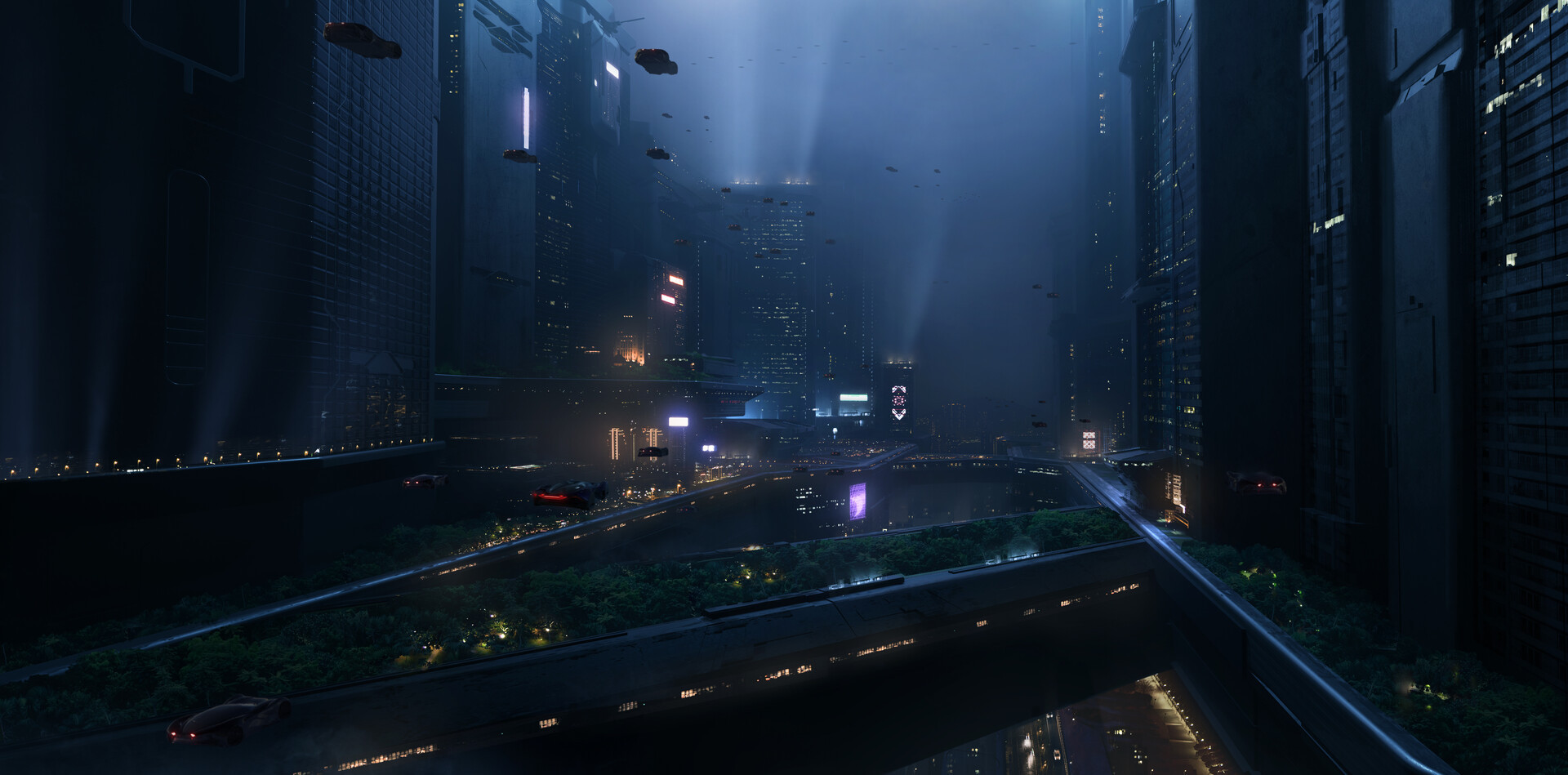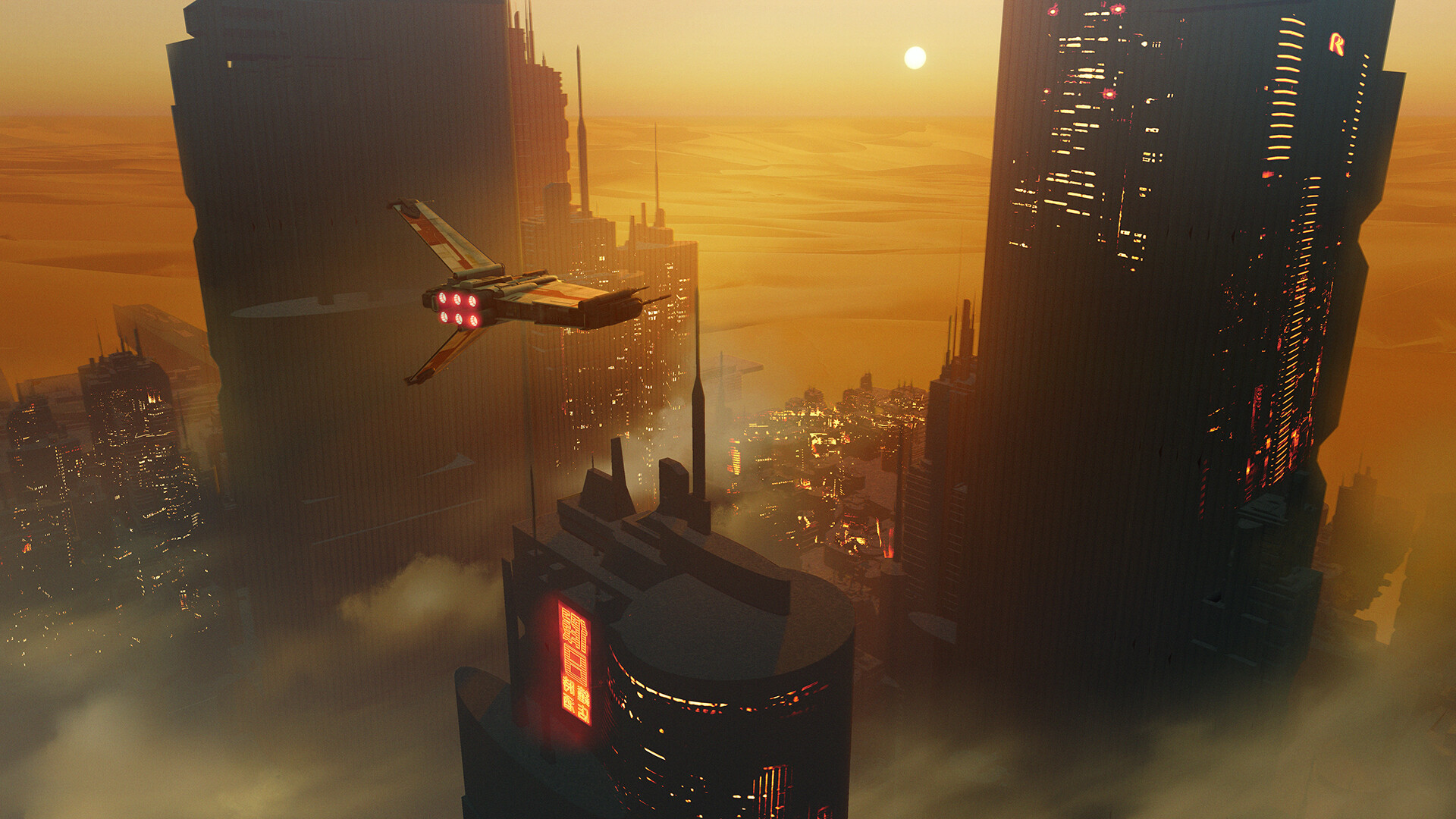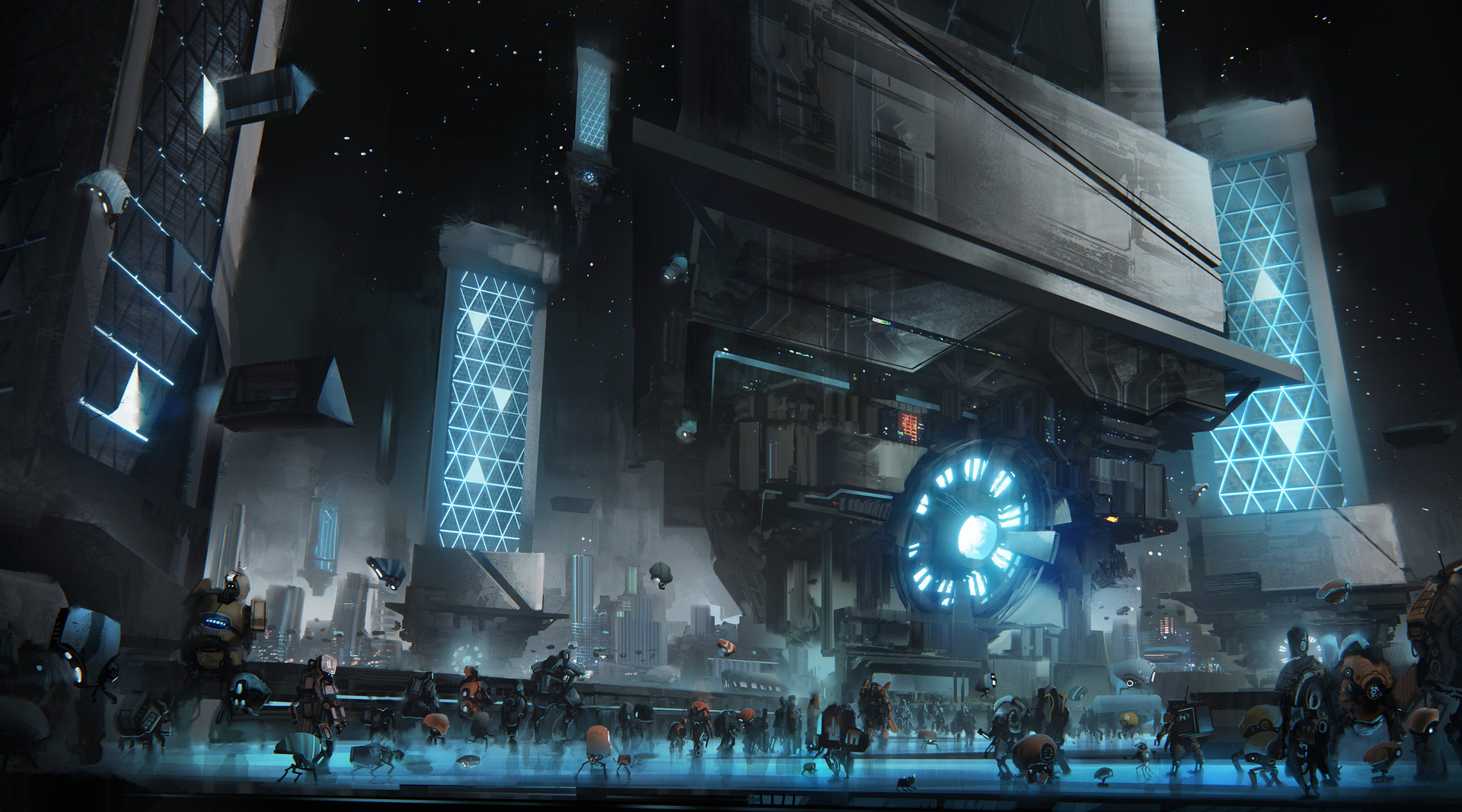The Science Fiction Megatext
I said I would write something about this, so here it is: not an essay or any kind of structured article, but a collection of definitions and some discussion about something I find extremely interesting, for some unknown reason.
Let's begin with the obvious - what on Earth (or, off-Earth) is a megatext?

Wilder world by Brandon Gobey, via ArtStation.
Historically, a "megatext" has been defined in several different ways. The most basic, explanatory definition (from Wikipedia) is: "a term used by scholars of speculative fiction that describes the elaborate fictional background, tropes, images, and conventions that science fiction or fantasy narratives share". That's pretty broad; let's see some examples.
In fantasy, there are a lot of stories that involve kingdoms, dragons, dwarves, political intrigue, magic, and swords. Specifically, certain magical creatures and classes show up again and again; Dungeons & Dragons' relationship to J.R.R. Tolkien's writing might be a useful thing to think about.
In science fiction, particular terminology and tropes show up time and time again. Think about 'hyperspace' or 'warp speed' - maybe some science fiction uses subtly different terms (for example, an "FTL drive"), but fundamentally, this is a common concept drawn on from pre-existing cultural knowledge. A science fiction author can feel confident in a reader's ability to grasp what a 'hyperdrive' is without going into too much detail, or potentially any detail at all. They can simply say the hyperdrive activated, and leave it at that.
This is all thanks to the science fiction megatext, a "collective body of knowledge, utilized by writers and recognized by readers" [x].

Desert City by Nicolas Camiade, via ArtStation.
One particularly interesting facet of speculative fiction megatexts is that, although fantasy concepts often have mythological or biblical origins, they become divorced from them through consecutive fictional representations (if those representations rely largely on the megatext). For example, fictional representations of Satan are, these days, pretty dissimilar to Biblical canon. Similarly, science fiction concepts are often linked to actual technological or scientific advancements, or social and political developments. However, through continuous use of these concepts in fiction, the kernel of scientific truth that may be contained in some of these concepts becomes secondary to the megatext and the narrative function of the concept. For specific science fiction concepts, the megatext has actually shaped the reality just as much (or maybe more) than the reality has shaped the megatext!
Allow me to talk about my favourite thing, in order to illustrate what I mean: representations of robots in fiction. The concept of an artificial, technological being is one of the oldest science fiction concepts. Its precursor, I would argue, is Mary Shelley's Frankenstein. Fictional representations of artificial beings have developed alongside actual scientific advancements in robotics and artificial intelligence, and while many fictional robots are inspired by real-world technological advancements, so too are many technologies inspired by science fiction. For example, the game Second Life (and now Mark Zuckerberg's 'metaverse') drawing inspiration from Neal Stephenson's Snow Crash, or the link between Apple's QuickTime and Star Trek: The Next Generation [x].

Starfinder - Aballon by Leon Tukker, via ArtStation.
So, what's the point of me saying all this? Mostly, I just wanted to gather my thoughts about the science fiction megatext, because I find it really interesting. But I also think it illustrates some of the ways science fiction has a real impact on the trajectory of society and technology, and how collective cultural knowledge operates. It's cool, right? The website SF Encyclopedia has some interesting things to say on the matter, particularly this entry.
That's all I have to say, I think.